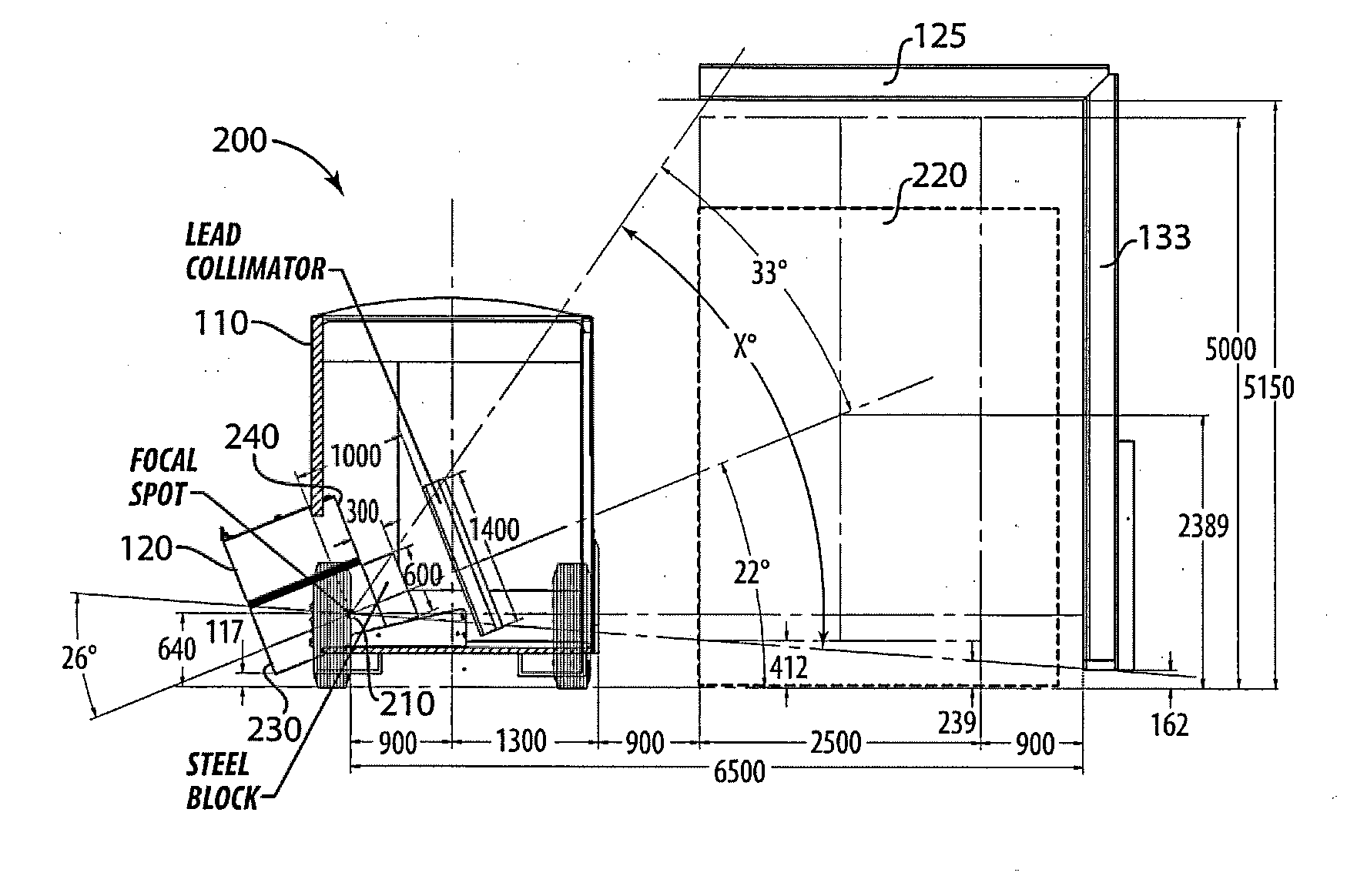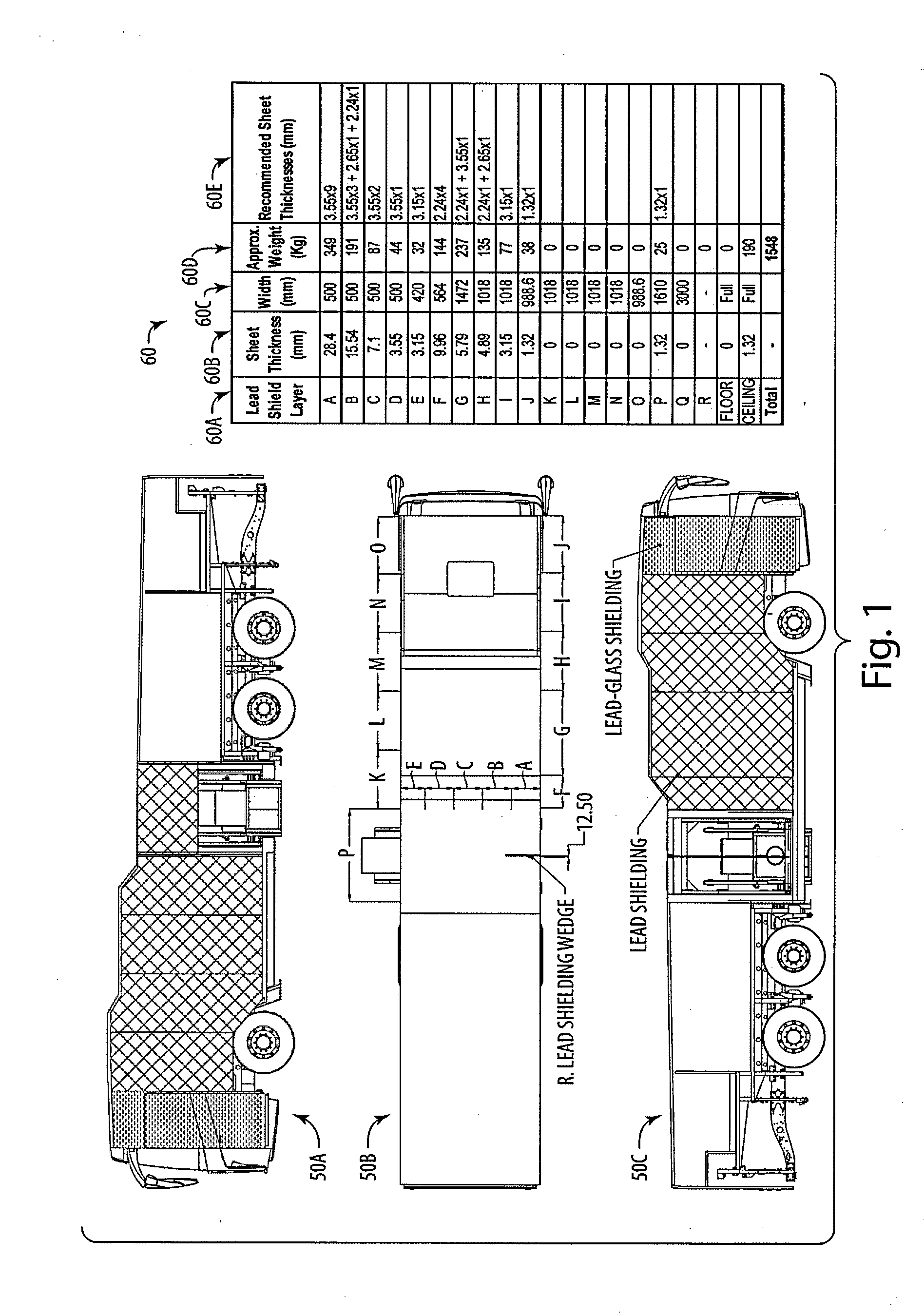Vehicle-mounted cargo inspection system
a cargo inspection and vehicle-mounted technology, applied in the direction of measurement devices, nuclear radiation detection, instruments, etc., can solve the problems of unfavorable inspection of the contents of every container, and the inability of conventional chassis types to operate, so as to reduce maintenance costs, facilitate operation, and ensure the effect of safety
- Summary
- Abstract
- Description
- Claims
- Application Information
AI Technical Summary
Benefits of technology
Problems solved by technology
Method used
Image
Examples
Embodiment Construction
[0017]The inventors have recognized that various deficiencies of conventional vehicle-mounted inspection systems may be overcome by reducing the overall weight of the system so that it may be mounted on a vehicle chassis type which does not include rails that extend from near the front of the vehicle to near the back. As such, detection components may be placed between the front and rear axles of the vehicle, without an x-ray beam having to pass through a chassis rail, and the weight of the system may be more evenly distributed from the front of the vehicle to the back of the vehicle, making the system easier to operate, safer, and less costly to maintain than conventional systems.
[0018]Embodiments of the invention may employ any of numerous techniques to reduce overall system weight to enable use of a chassis type that does not include chassis rails extending from roughly the front of the vehicle to the back of the vehicle. For example, in some embodiments, overall system weight ma...
PUM
 Login to View More
Login to View More Abstract
Description
Claims
Application Information
 Login to View More
Login to View More - R&D
- Intellectual Property
- Life Sciences
- Materials
- Tech Scout
- Unparalleled Data Quality
- Higher Quality Content
- 60% Fewer Hallucinations
Browse by: Latest US Patents, China's latest patents, Technical Efficacy Thesaurus, Application Domain, Technology Topic, Popular Technical Reports.
© 2025 PatSnap. All rights reserved.Legal|Privacy policy|Modern Slavery Act Transparency Statement|Sitemap|About US| Contact US: help@patsnap.com



